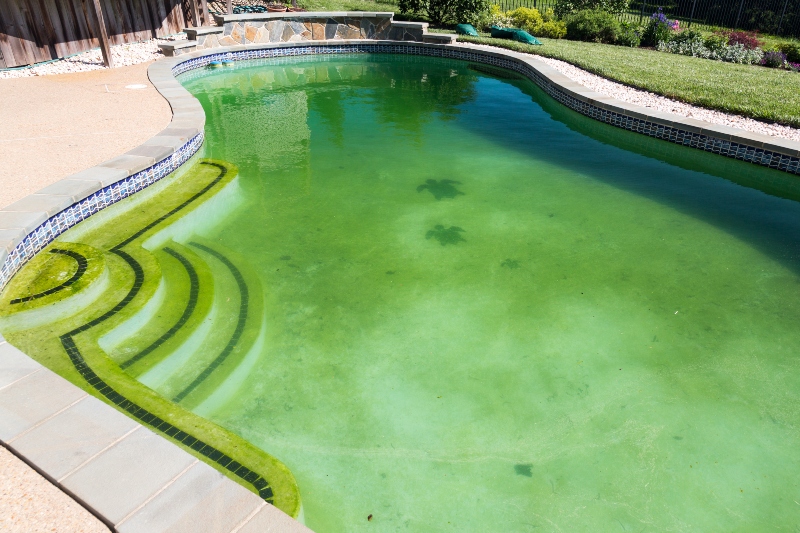
The beginning of Spring brings the revival of life long forgotten in the winter months, one of those being your pool! The swim season in Texas typically begins around mid-March to early April, depending on how long colder fronts linger across the state. However, it is important to note that while the winter season may have passed, your pool is not always swim-ready right away. Here are a few tips to prepare your pool for Spring!
Drain The Remnants Of Winter Away For A Fresh Swim Season
Seasonal storms can leave behind traces of dirt and debris in the backyard, scattering all sorts of materials and chemicals into your swimming pool. Remove all debris from any protective covering and prepare to drain any excess water sitting on your pool cover. Pump covers can be an easy solution for removing large bodies of water left behind from winter storms. Pool covers certainly help make preparing your pool for the Spring, much easier.
Don’t Abandon Your Pool Cover Over The Summer Months!
Your pool’s cover may be a beloved companion throughout the winter but can often be neglected by owners when the warmer weather returns. After months of acting as a shield against the harsh winter weather, it is important to treat your covering with the care it deserves once it goes back into storage. Start with laying your cover out on a sunny day to dry out any dampness on the surface before treating the material with an anti-mold and mildew agent to seal it from any re-growth that may occur. If you plan to use the cover during the swim season, it is still recommended to treat it before returning it back to your pool.
Take Care Reconnecting Equipment Before The New Swim Season
While pools are not always fully winterized in North Texas, sometimes vital functions of your pool are left untouched during the winter if they have been switched out for winter-proof gadgets that offer additional protection during inclement weather. Before starting up any filtration or pumping systems, ensure all winterizing plugs are removed and replaced with the regular drains plugs, especially in your pumps, filter, and heater systems. All valve fittings should be returned to place, with any residue antifreeze drained from the area if necessary. Like a well-tuned machine, a pool’s internal equipment requires all parts to function in harmony for the best results. Taking time to check all connections and parts are in place can ensure your pool is ready for the new season.
Perform An Inspection For Winter Storm Damage
Winter can bring a host of bad weather and subsequent damage to your backyard pool, with falling trees, dirt, and debris wreaking havoc on your pool. Checking for repair work is an essential part of ownership and an important task in order to re-open your pool if it was closed for the season. This inspection is a perfect time to check for any external or system repair work, allowing you to spot unusual leaks, noises, or signs of disrepair. Most commonly, equipment or its brackets and fittings come loose during closure or require adjustments to function correctly. Pay close attention to your valves and filters, ensuring systems are at the correct setting before powering on.
Prepare The Water For Healthy Swimming!
With all your pipes, valves, and plugs back in their rightful place, it is time to move on to the main feature of your pool – the water! Check that your levels have not dropped too low during the winter period, using the skimmer as a marker for measuring. Anything below half the skimmer is classed as underfilled and needs topping off before moving forward. If you have a multi-port valve, set the filter to “recirculate” to get the water flowing through the systems, leaving the filter to backwash for a minimum of 5 minutes.
Adjust Your Pool’s Chemicals For The Best Water Quality
Your pool’s filtration system will remove most of the suspended dirt flowing through your pool but will not be able to catch the chemicals lurking below. Once the water has finished flowing, use a testing kit to check the quality of the water. A full day’s flow will give the most accurate reading of how your pool’s chemistry has fallen out of balance during the Winter. You should test for total alkalinity, pH, chlorine, calcium hardness, and stabilizer (cyanuric acid) levels to give you a clear recommendation of which doses are required. Some owners will also opt to shock their pool with a higher dose of chlorine at this time to eliminate any remaining contaminants left over from the winter.
Get Swim-Ready For The Spring Season With Gold Medal Pools
Preparing for your pool’s re-opening is the best way to ensure your backyard is swim-ready. With the right knowledge, equipment and dedication, owners can transform their weathered pools back into a dreamy oasis just in time for warmer days ahead. If you are short on time this year for your re-opening but desperate to get back in the water, the experts at Gold Medal Pools are on hand to prepare your pool for Spring. We offer specialized services in maintenance, repair, and cleaning tasks, including preparing your pool for Spring! Contact us today to get started!





